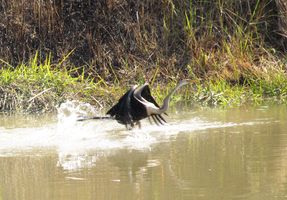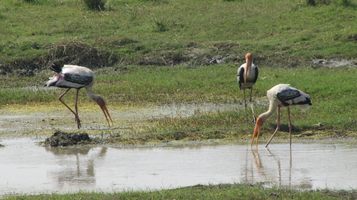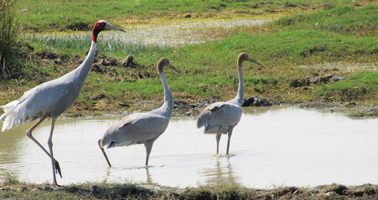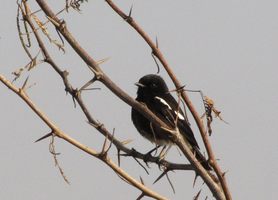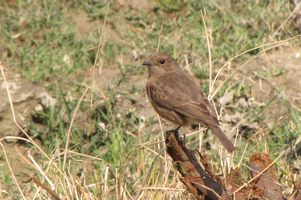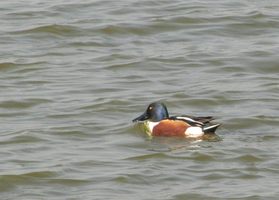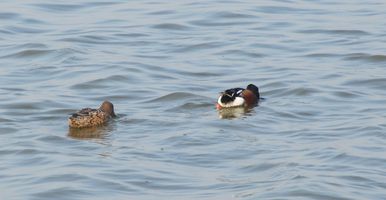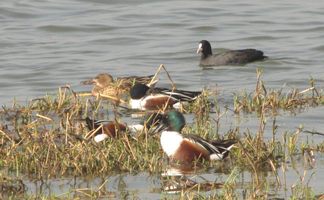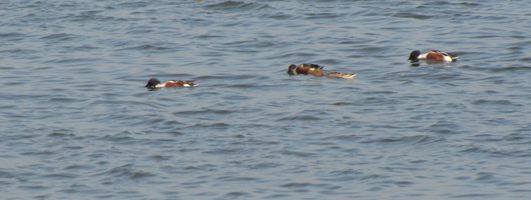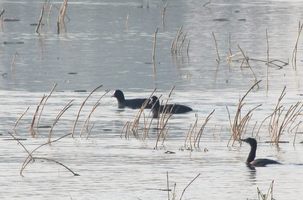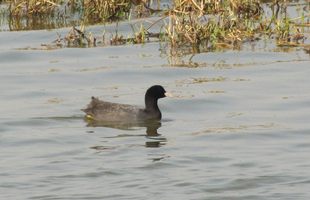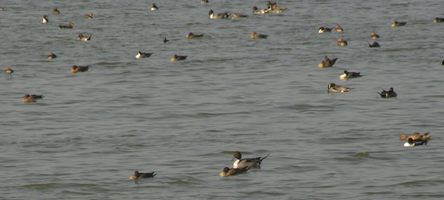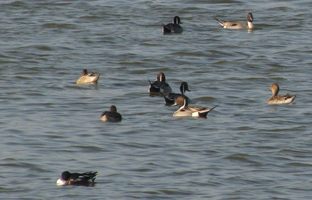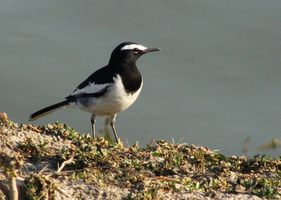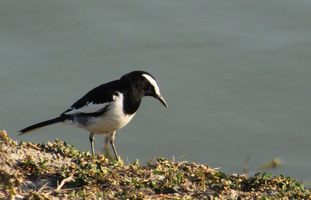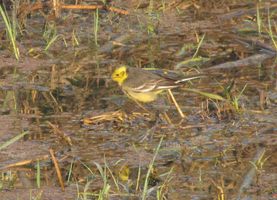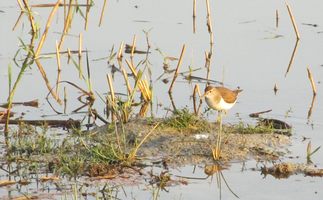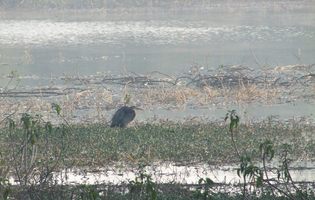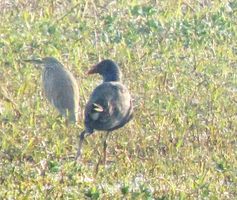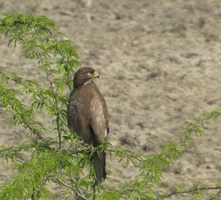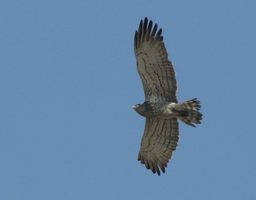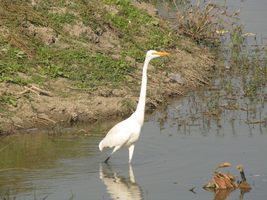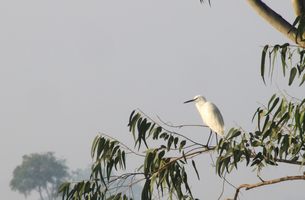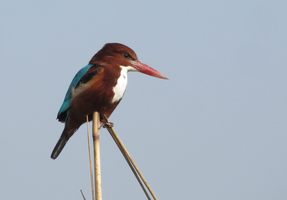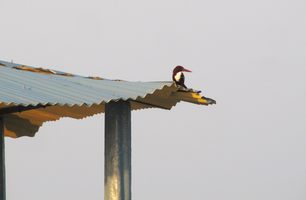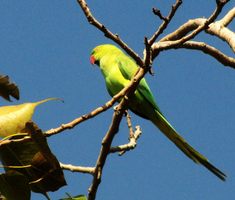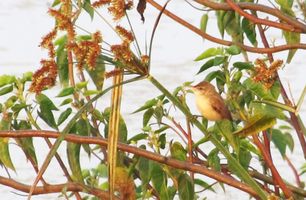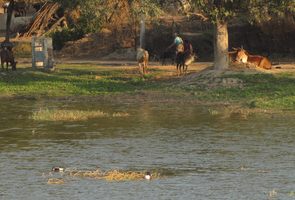this was the first multi-day bicycling trip from the bumpy-trailers. last year we had bicycled to bahosi and spent the night there, but we had come back by car. this year was less exploratory - we knew what to expect. it was a minimalist trip - no vehicle support of any kind, carrying everything ourselves.
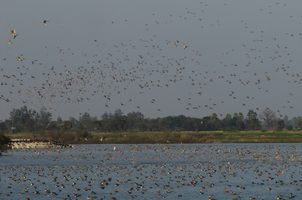
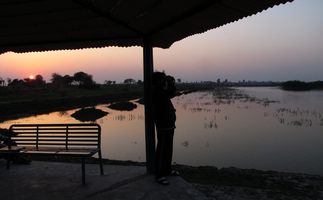
a large pintail flock taking off near evening. suhail framed by the setting sun.
(click to enlarge any image on this page)
more than 3 thousand each shovellers and pintails, about a thousand each greylag and coot. between 15 and 20 thousand birds in total.
bicycling there
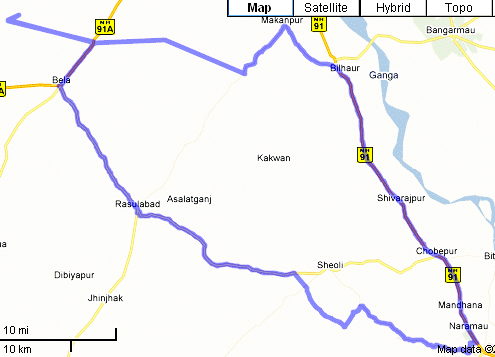
we rode out along country roads through rasulabad and bela; came back via makanpur and bilhaur and GT road. (click for interactive map)
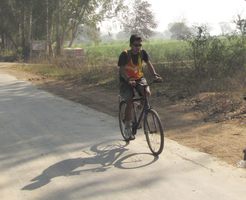
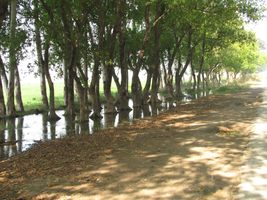
brajesh on the road to rasulabad. at one point, we cross these trees that seem to thrive on watery soil. after rasulabad, brajesh developed cramps, and had to head back.
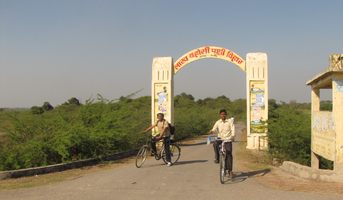
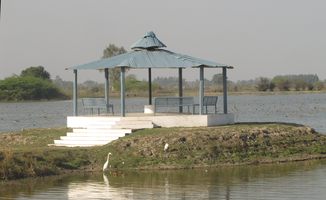 suhail and mahendra singh at the gate to the lakh-bahosi sanctuary. one of
the two gazebos at the park.
suhail and mahendra singh at the gate to the lakh-bahosi sanctuary. one of
the two gazebos at the park.
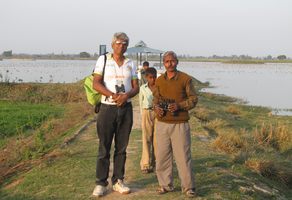
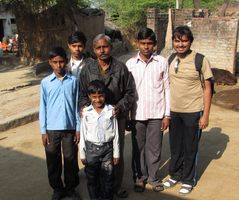
karan singh is the most knowledgeable and helpful man at bahosi, and he isn't even an employee. this time, he invited us for breakfast at his home in the nearby village of kalyanpur.
birds (en-route)
On our way to Bahosi, we ran into these red-headed bunting lazing on the reeds by the road.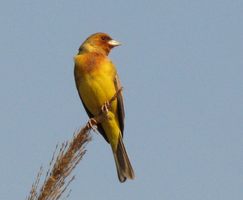
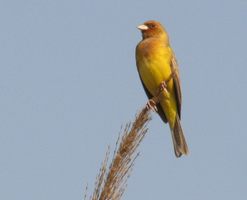
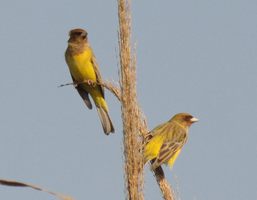
the red-headed bunting, emberiza bruniceps, a winter visitor. munia-like seed-eating bill. i have seen another group once, off the lower ganga canal.
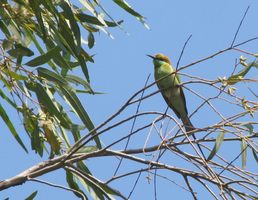
the bee-eaters, which disappear locally in darkest winter, are just starting to be seen again. this one was part of an athletic group near bela.
birds at bahosi
Though mid-Feb is getting a bit late, Bahosi jheel was still very busy. Around 3PM, found at least 3000 each northern shovellers and pintails, a few hundred greylag that honked out overhead, red-crested pochard (~25), common pochard, tufted pochard (~20), comb duck (>60), spoonbills(~30, will go up to 100+ as the lake recedes). Wigeon. A few gadwalls and common teals - there were thousands of each a few weeks back. A couple of ruddy shelducks. A dozen bar-headed geese had come, but couldn't find any, maybe gone. Plenty of black-headed ibis, painted storks (~40), purple moorhen. Several eagles, perhaps spotted. Grey heron. Purple herons. Coots (500+). Among the more common birds, several hundred little grebe, rooting about the shallows in straggly lines. Asian openbills, stilts, tons of egrets. Pied kingfishers diving. White-breasted waterhen and kingfisher, hoopoe, ashy-crowned lark, little and greater cormorants - in the sanctuary and also commonly along the bicycling route, esp the canal segments. Little green bee-eaters starting to re-emerge after wherever they hide in deepest winter. Sarus in groups of three or more - parents plus immatures. Crested larks and yellow wagtails along the edges. The jheel had probably > 15K individuals altogether. At dusk, most flocks leave for neighbouring areas and return before dawn. At the same time, large groups of sarus fly in to occupy the shallows, and wake you up with their terrific trumpeting at dawn (but there were fewer than end-Feb last year (http://www.cse.iitk.ac.in/users/amit/bicycling/lakhbahosi/). The Lakh jheel has a similar mix though more purple moorhens - but missed out on it this time owing to pressures of getting back.Northern Shoveller
Northern Pintail
The male pintail is an elegant bird, unmistakable because of its bright contrasty colours and also the sharp tail. You'll often find them upended, dabbling just below the surface.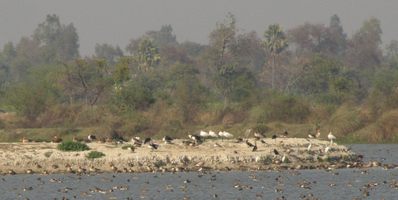
one of the islands with spoonbills, geese (maybe greylag?) and cormorants. also some ruddy shelducks.
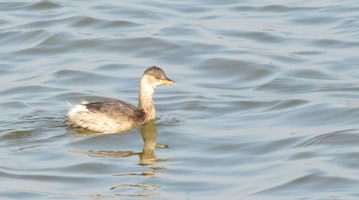
little grebe
spoonbills, ibises and painted storks
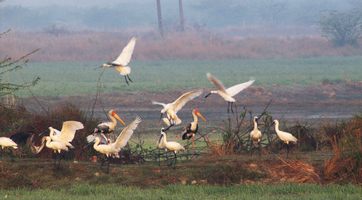
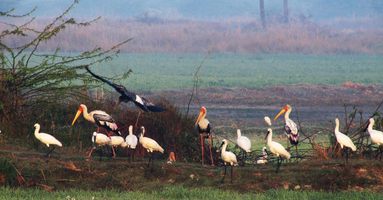
in the morning, we found about fifteen spoonbills, five to ten black-headed ibis and about the same number of painted stork lioned up along a ridge.
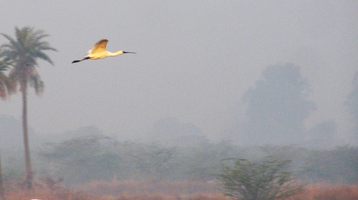
a black-headed ibis flying into the jheel at dawn
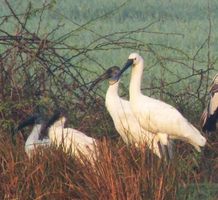
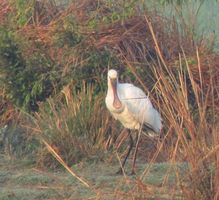
ibises and spoonbills
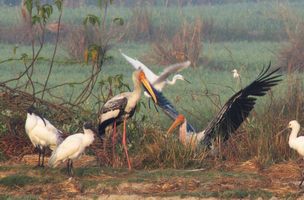
the painted stork is a large bird, with a 1.6m wingspan.
non-migrants
Last year, we had circumnavigated the lake. At one point, we ran into a large spotted eagle, sitting on the path barely four meters from us. this year, we saw eagles sitting on trees far away, but this chappie we saw up close as we were on our way out.egrets, larks and hoopoes
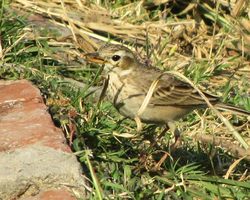
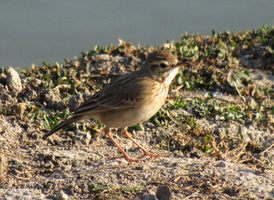
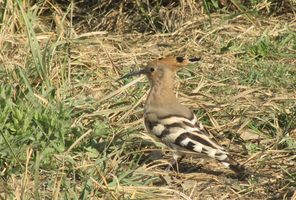
the crested lark was a very common sight, all along the route and also in bahosi. also saw quite a few hoopoes.
kingfishers
for some time, we watched a pied kingfisher executing its spectaculor dives into the water. whether it emerged with something or not, we couldn't tell. we did see a crow flying by with a fish in its beak.about the lakh-bahosi bird sanctuary
the bahosi jheel is right beside the village of bahosi, and the villagers have their fields all around the birds. though this causes a little disturbance to the birds, especially near the shore, the lifestyle of the villagers is one that is largely non-intrusive to the birds. while staying overnight at bahosi has its charm, there are no facilities. no electricity, no running water. the forest department does have a guest house at bahosi, but it is completely dysfunctional, and has practically no visitors, even in season. for more information including a pamphlet brought out by the forest department, uttar pradesh, circa 2003, visit our lakh-bahosi 2010 webpage.amitabha mukerjee Feb 25 2011 mukerjee [at] gmail
